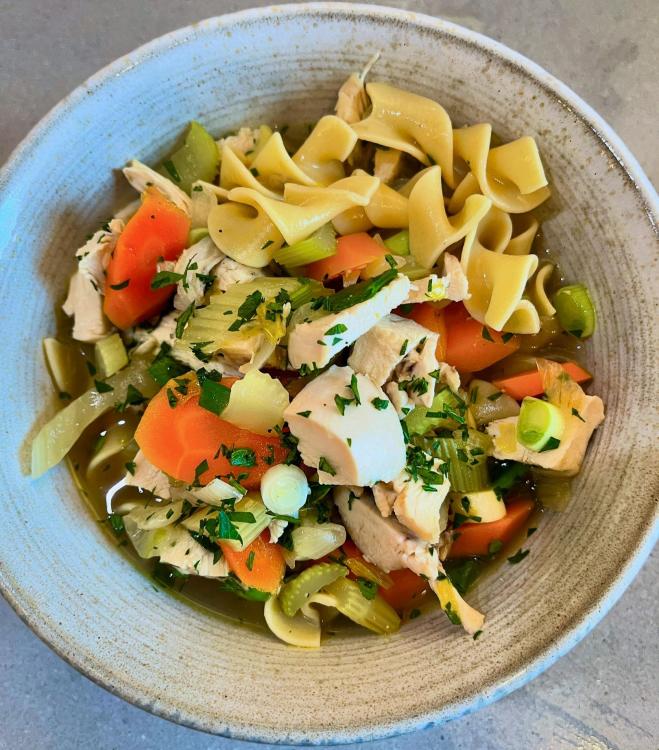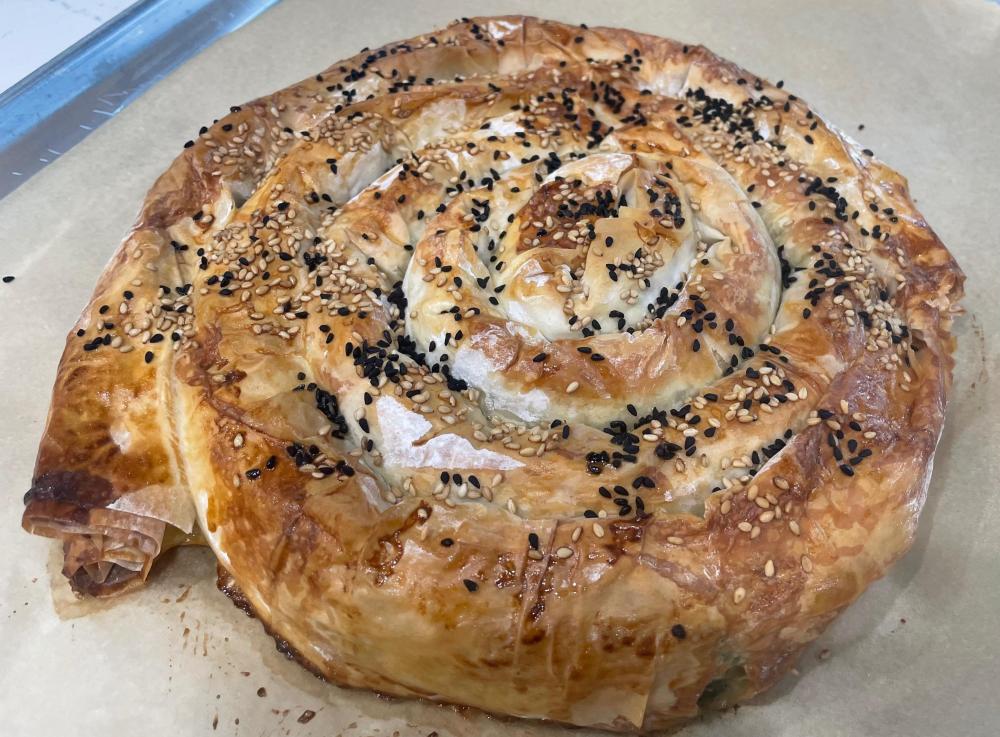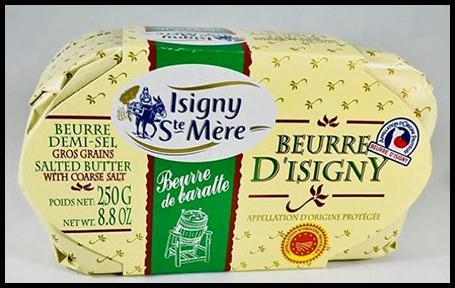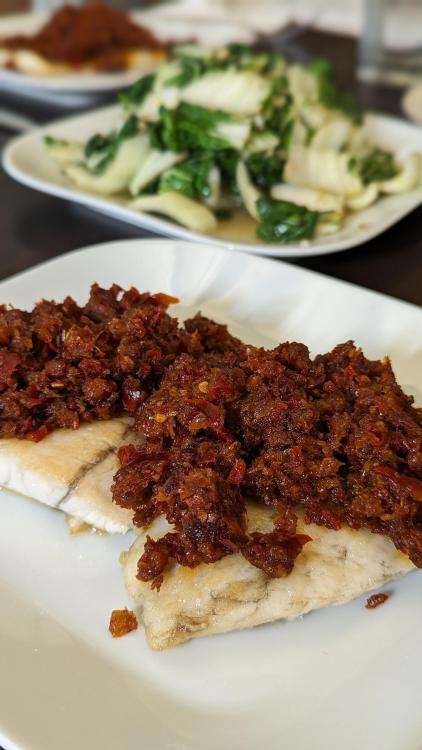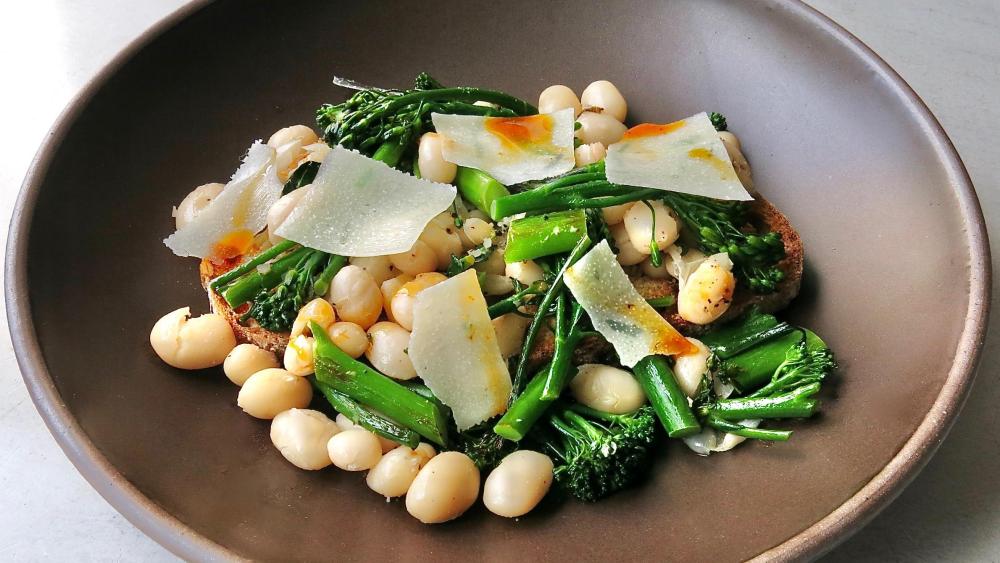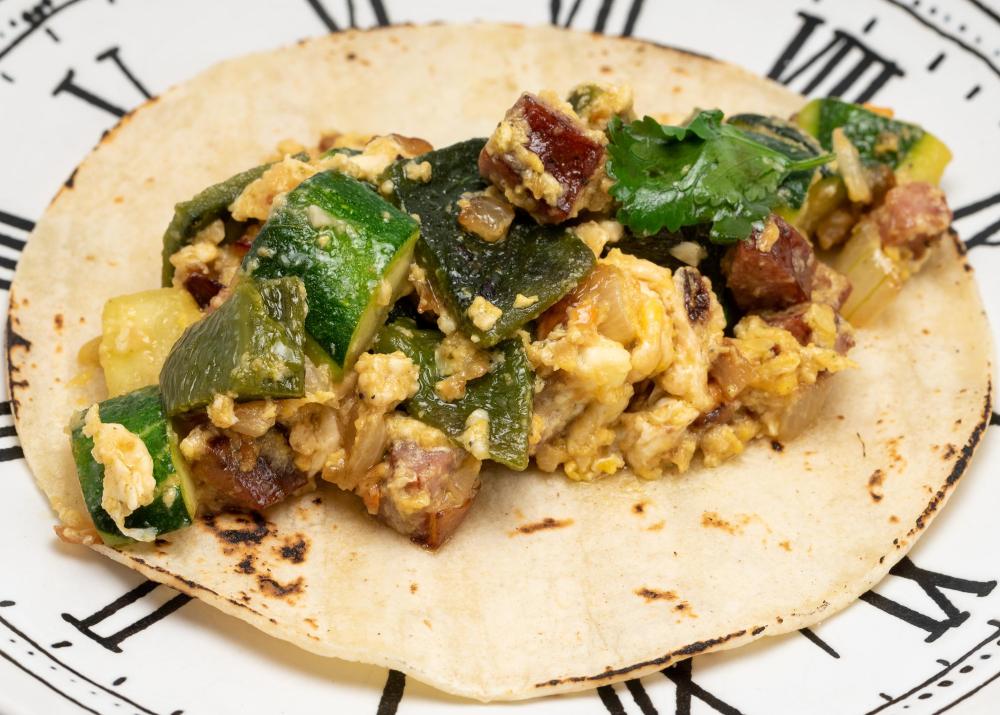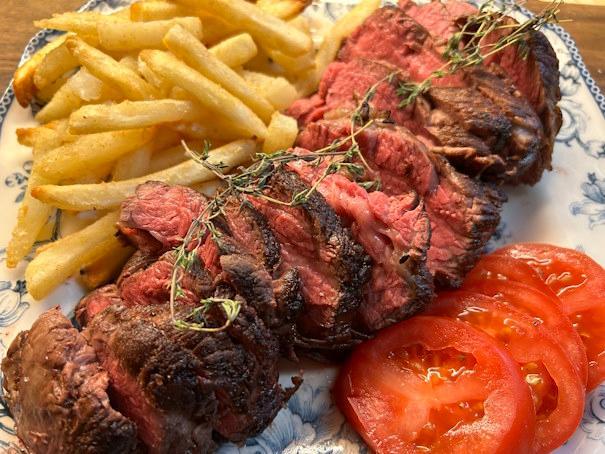-
Welcome to the eG Forums, a service of the eGullet Society for Culinary Arts & Letters. The Society is a 501(c)3 not-for-profit organization dedicated to the advancement of the culinary arts. These advertising-free forums are provided free of charge through donations from Society members. Anyone may read the forums, but to post you must create a free account.
All Activity
- Past hour
-
We both got another round of Covid vaccinations the other day; and we both had more side effects than usual. Just a general malaise, headache, body aches, etc. So... Chicken noodle soup, from scratch.
-
That's putting it mildly and as I remember, it's practically all year long.
-
I'm having a good week in the fruit department. Not only did my second favourite fruit, mangosteens turn up but today I got the first of the season's 杨梅 (yáng méi) Chinese bayberries (Myrica rubra), my favourite. I first mentioned them back in this post. Happy mouth!
- Today
-
I'm pretty sure I have that book somewhere...I do remember, and this is quite some time ago, that when driving past Gilroy at harvest time (be it heading north or south), the air was perfumed mightily. As far as garlic presses go, just a waste of space in a drawer. Nothing that a sharp knife or a microplane can't handle.
-
-
jkb joined the community
-
I haven't tried it but some people lacto-ferment mustard. That might help give you what you are after.
-
Shreya joined the community
-
https://forums.egullet.org/topic/161694-china-food-myths/?do=findComment&comment=2285288
-
Earlier this evening, I made a small batch of hot Chinese mustard. I checked some recipes online and put together an equal measur of Coleman's mustard and hot water, salt, white pepper, rice vinegar, and a touch of toasted sesame oil. I wanted a more complex mustard and more than just heat. After letting the concoction rest a bit, I tasted it and found that for what I want I'm on the right track, but quite a bit more fiddling with the ingredients and their proportions is in order. If anyone has any ideas or experience with an interesting recipe, I'm listening.
-
Turkish inspired dinner with borek - phyllo dough filled with spinach, onion and feta. Topped with a mixture of egg, oil and milk and some sesame and nigella seeds.
-
Thank you! 1kg is a much better trial size!
-
Has anyone used their APO to ferment cured meats? Im 100% sure it would work great, im just not sure on the settings to achieve lets say, 85F and 85% RH. I can't seem to find info on RH with the APO, but my common sense tells me 85% on the steam function would be 85% RH, but where im not sure is what mode would work better for this is SV mode or oven mode? Anyone know what settings are better to achieve 85F and 85% RH? For example, proof mode for proofing dough for bread making used oven mode with 10-100% on the steam function. I ordered a hygrometer to do some testing. It can handle 158F but im not sure its waterproof, so i will be starting at 10% steam to see what that means in RH, and go from there.
-
-
I'm thinking you wanted to know more detail than what Vermont Creamery includes in this little cartoon, but it's as @pastrygirl said: pasteurize the fresh, fluid milk -> add live bacterial culture -> ferment -> churn into butter.
-
I think you wouldn't be surprised to find out most large American butter producers don't like to do it because it slows things down unlike adding a couple % extra butterfat for a 'European' butter which is pretty trivial. Vermont Creamery started doing it the slow way back in 1998 so they didn't have to change anything. Thankfully cultured butter isn't as hard to find as it used to be! https://www.vermontcreamery.com/collections/cultured-butter 86% Vermont Creamery butter (I used to see it retailed more but now it seems to be going more to restaurants) I can get it locally at Farmshop, if I ask because they use it in the bakery. https://www.murrayscheese.com/dp/vermont-creamery-lightly-salted-chef-roll
-
That is correct. In case it's not clear, the bacterial cultures are specific to each application. I'd be interested in hearing more about this. From a manufacturing perspective, (to the extent that fluid milk is manufactured, and most of it is), it runs contrary to everything I thought I understood about the dairy industry.
- Yesterday
-
Cultured with live bacteria like buttermilk, yogurt, and sour cream are. Instead of churning cream straight into butter, they make creme fraiche first, then turn that into butter.
-
Whatever you mash it with...don't frigging burn it. 😀
-
An amusing side note - we ended up buying both the Zyliss and the Kuhn presses - I bought one and Husband bought the other unbeknownst to the other. So when I delightedly brought my Kuhn home (I get Amazon stuff delivered to the bakery, he gets stuff delivered to the house since he's home all day) to show him, he produced the new Zyliss and showed it off 😆 Anyway. The end result is that he loves both of them (I opened my package at work and he opened his so returning one wasn't a possibility) and he now volunteers to prep the garlic (😊) so he can have the dish as often as he wants LOL
-
So, what exactly is cultured butter and in what way is it different from regular, uncultured butter?
-
low water butters - ala Plugra, etc - are touted for flavor, etc. for any dough that aims to be flaky or "puff pastry" . . . . that effect is attributed to water in the butter exploding into steam and 'making the puff' / creating the separation of laminated layers. so - that raises the issue for baking . . . high water aka cheap 'American' butter = max steam explosion . . . . or centuries of bakers using high fat lower water butter. curious, eh?
-
That's true. But how much greater, and does it matter in the finished good? US butter is about 80% butterfat, about 18% water and 2% milk solids and the like. Taking that 18%, we can calculate the water content (0.18 x 16 = 2.88 oz). That's not quite 5 tablespoons. Taking the European percentages (I couldn't nail down the 86% Vermont that @AAQuesada references; the highest I could find was highest I could find was Organic Valley Special Edition, at 84%. Using the same arithmetic (and subtracting 2% milk solids), we get 2.24 ounces, or 4-1/4 tablespoons. So the difference between the two butters is about 3 tablespoons in a pound of butter. I don't do much baking, except for cookies, but that doesn't strike me as a big deal. Checking a few recipes, I found in most cases (the exception being brownies, which have almost no added moisture) the water content of the butter wasn't significant, when placed in context with the rest of the liquid in the recipe. Here's, roughly, the water content of a few: pound cake 8 T milk, 1 T brandy, 1 t vanilla, 3T from egg whites, 2-1/2 T from 1/2# butter (7% of total water from US butter; 6% had it been Euro) banana bread 1 t vanilla, 18 T banana, 3/4 T honey, 1-1/4 T from 1/4 # butter (11%; 9-1/2%) cornbread 20 T milk, 1 T from egg, 1-1/4 T from 1/4 # butter (12%; 10-1/3%) popovers 16 T milk, 2 T from eggs, 1T from 1-1/2 T butter (18%; 15-1/2%) So if you needed proof for your assertion "I'm guessing it doesn't, especially in the quantities used for such baked goods," there it is. Even at the widest margin, European-style butter contributed only 2-1/2% more butterfat. As for flavor, the recipe authors seemed to claim that the biggest difference was between using butter and not (using instead vegetable oil, shortening, lard, etc.). There were assertions that the water content of butter was mechanically beneficial in some cases, but real proof was scarce. What seemed to make big differences were 1) the form the butter took: straight from the fridge, room temp, melted, browned; 2) whether it was cultured or not. The first criteria will determine, in large part, the height, flexibility, puffiness and crispness of the finished product. The second criteria is simple a matter of taste -- you either like it or you don't. Or you like it in some case but not others.
-
We're generally looking at a range only between 80% and, at the most, 85%, so that'd be my guess, too. For my most-baked sweet, gluten-free chocolate brownies, I haven't noticed any difference between Challenge, Kerrygold, and Plugra.
-
Good point. Hadn't thought of that. Wouldn't the same hold true when using an oil?
-
There's a salted French butter that I sometimes treat myself to ... wonderful on a fresh Acme or Semifreddi baguette. Thanks for your comment on baking butter. Helpful.
-
Who's Online 8 Members, 1 Anonymous, 573 Guests (See full list)
-
Popular Now
-
Recent Forum Images


